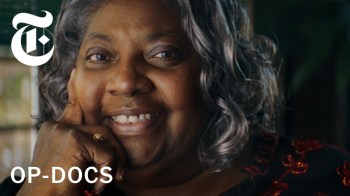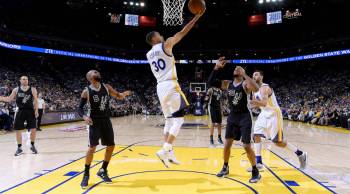The trouble with NBA’s one-and-done
TEXT OF INTERVIEW
Renita Jablonski: While fans wait to see what teams will face off in the NBA finals, there’s a lot of debate going on about the path some players take into the world of professional basketball.
A former USC basketball star was just dropped yesterday by his agent ahead of the NBA draft next month. There are allegations the player illegally received cash and gifts while he was in college. But if he had his own way, he may have never set foot in a college classroom.
LeBron James entered the NBA right from high school. He was among the last players to do so. After that, the league put in place a rule known as one-and-done, preventing an 18-year old from pretty much becoming an instant millionaire.
Sports writer Donnell Alexander is here to talk more about one-and-done. What was the idea behind the rule?
Donnell Alexander: Well, the plan was that players would no longer be able to come directly to the NBA. They’d have to do a year of college. And the problem with that is these kids are bound for the NBA by the time they’re 13, 14 years old. They’re heavily scouted, they know their value. Every player who’s come in with that expectation that they do one year and quit has done so. And it’s hurt the classroom environment, obviously, that’s the first thing that takes a hit. But there’s also room for lots of corruption.
Jablonski: Can you explain one of the latest examples we have at USC?
Alexander: Yeah, the latest example at USC is O.J. Mayo, and the allegations are that since he was a high school player, and agency’s been funneling $30,000 in cash toward him. Which sounds like a lot of money, and it obviously, it is for a kid . . .
Jablonski: For a high school kid, I’d say.
Alexander: Yeah, it’s a lot of money.
Jablonski: And so the runner is supposed to what, sort of . . .
Alexander: Here’s where it really gets complicated.
Jablonski: . . . get this kid ready to go a certain way once the draft comes up?
Alexander: Yeah, the idea is that at the end of his amateur career, he’ll sign up with the agent. You know, these runners were basically started by the shoe companies. The shoe companies have their hands very deep in amateur athletics. They’re sort of wooing the kids so that the kids will come with them by the time they’re professionals. The ADIDAS’s, the Nike’s, they’re all players in the game.
Jablonski: And what about the NBA? What kind of questions does it have to ask itself right now?
Alexander: The real question that everyone’s asking right now is, is this one-and-done rule beneficial to anyone?
Jablonski: So, what about you? Are you a fan of one-and-done? What would you do?
Alexander: I think one-and-done’s a really bad rule. I think that O.J. Mayo, for example, he was the person who could open the Gaylan Center at USC. Granted, he probably made $30,000, maybe more, for his appearance there, but he put USC basketball on the map. The number 32 jersey at USC is a high seller, he doesn’t get a cut from that. And the TV deals, all these things add up to a fairly inequitable deal. So in essence, the NBA is shirking its responsibility by not developing its own minor league.
Jablonski: Donnell Alexander blogs about sports and fitness for Moli.com. Thanks so much for coming in.
Alexander: Thanks for having me.
There’s a lot happening in the world. Through it all, Marketplace is here for you.
You rely on Marketplace to break down the world’s events and tell you how it affects you in a fact-based, approachable way. We rely on your financial support to keep making that possible.
Your donation today powers the independent journalism that you rely on. For just $5/month, you can help sustain Marketplace so we can keep reporting on the things that matter to you.


















